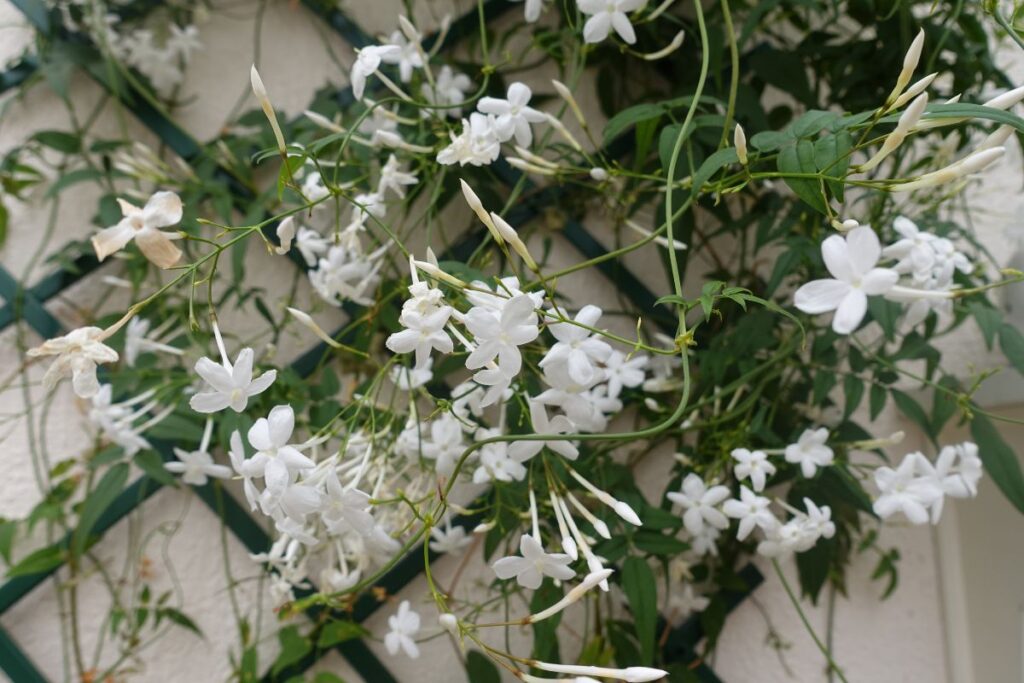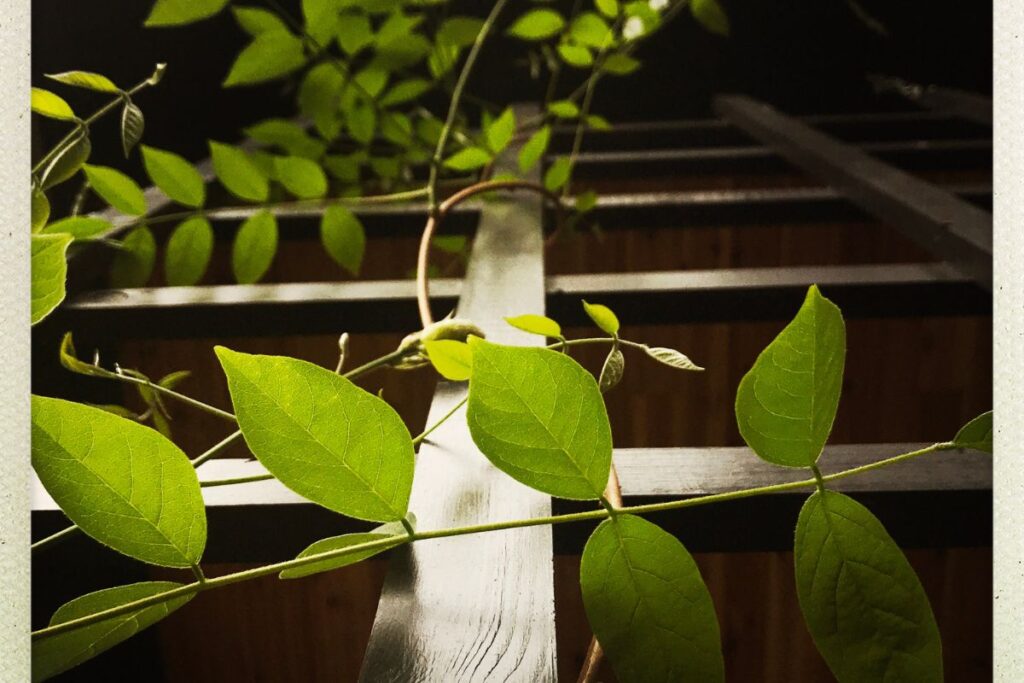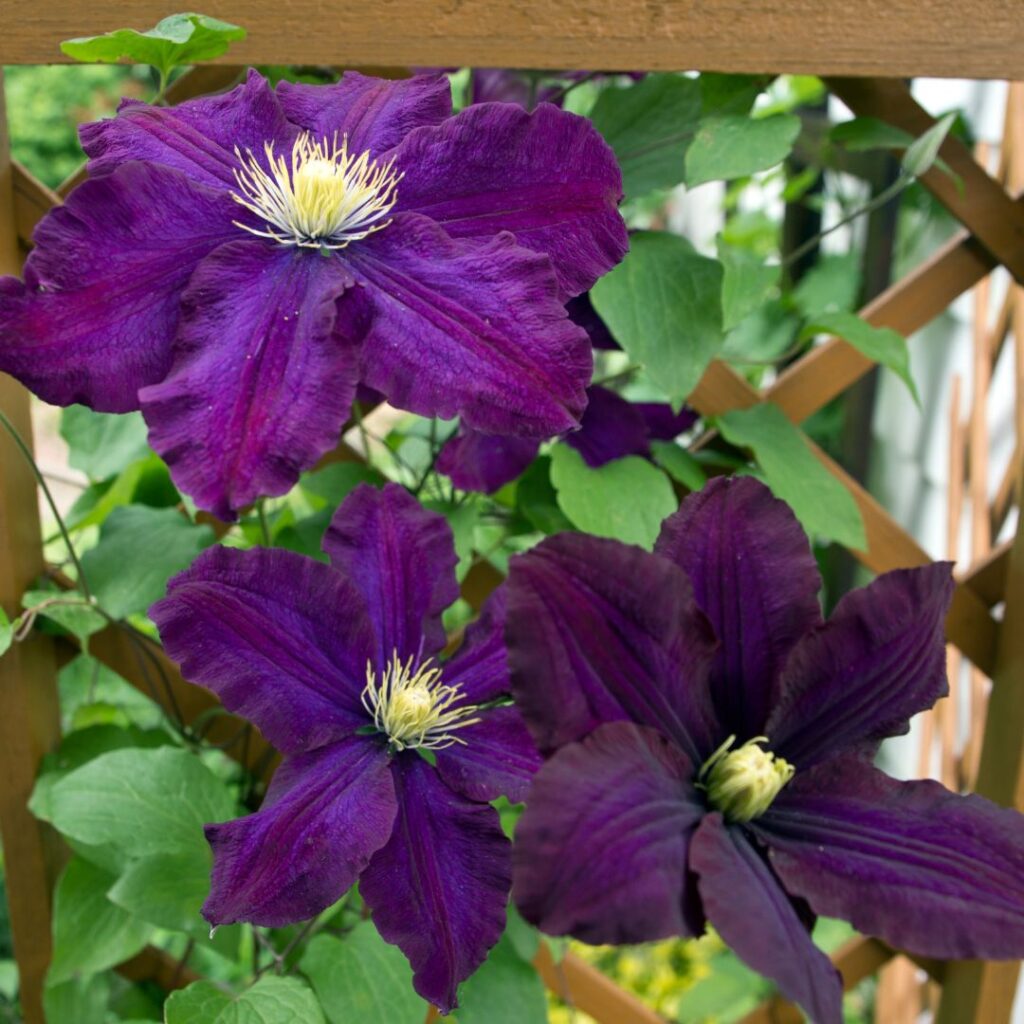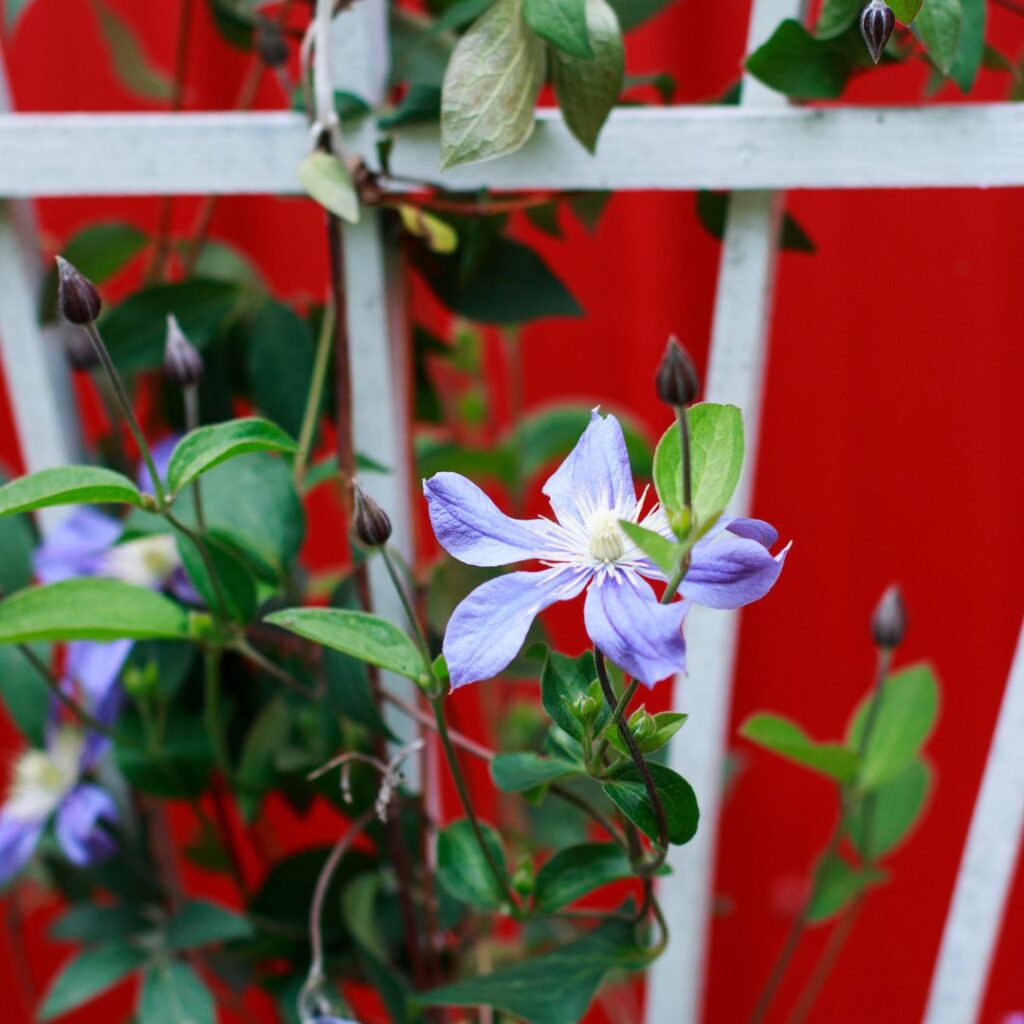How to train a plant to climb? Several effective ways are available if you want to train climbing or vining houseplants. Moss pole, hoop, or indoor wall training are useful ways to train an indoor plant to climb.
If you’re a home grower, you might have planted a vining houseplant such as philodendrons, monsteras, pothos, or winter jasmine. Training these types of fast-growing tall indoor plants that might have come from tropical rainforests isn’t that challenging.
This blog will provide you with an effective step-by-step way to train an indoor plant to climb a trellis.

Contents
- 1 Things to Do Before Training Indoor Plants Climb a Trellis
- 2 Training Your Indoor Plants to Climb a Trellis
- 3 Pruning and Maintenance
- 4 Training Techniques for Houseplants to Climb Trellis
- 5 Enhancing Indoor Trellis Aesthetics
- 6 How to Make an Indoor Trellis for Your Plants
- 7 Frequently Asked Questions (FAQs)
- 8 Wrapping Up
Things to Do Before Training Indoor Plants Climb a Trellis
So, what are the things you must ensure before you begin training your houseplants to climb trellis? Here we’ve listed 3 important factors that you’ll have to make sure of before moving forward.
- Selecting the Right Indoor Plant
- Choosing the Appropriate Trellis
- Placement and Positioning
In case you are a beginner, we will provide a brief description of these key factors so that you can get a clear overview of this initial stage of training climbing houseplants.
Selecting the Right Indoor Plant
Not all houseplants can climb. Some will need house plant care accessories or supplies to grow better. The indoor plants that are vigorous growers and have pliable stems can be trained for climbing. Some popular vining houseplants are Jasmine, Pothos, Philodendrons, Hoya, and Ivy.
For instance, if you can provide optimal conditions, the Pothos climbing plant can grow fastest. It can grow 12 inches every month under appropriate conditions.
Therefore, select one of the indoor plants that are known for the fast-growing climbing habit.
Choosing the Appropriate Trellis

Choosing the right trellis is another key factor for successful climbing indoor plants. Make sure to choose a sturdy and proper for the size and weight of the climbing plant you intend to grow. You should also ensure the vine plant is firmly anchored in the ground against a wall.
Here is a list of things to ensure while selecting the proper trellis:
- Size and Strength
- Material (e.g., wood, metal, or plastic)
- Design (Choose a trellis design that suits your plant’s aesthetic and growth pattern)
- Installation (e.g., wall-mounted, freestanding trellises, or obelisk and tripods)
- Adjustability (Choose a trellis that allows you to adjust its height and width)
Placement and Positioning
The last thing you want to make sure of is the placement and positioning of the trellis. Home growers should place the trellis where there is optimal light and support for climbing plants indoors.
With quality growing medium supplies, your indoor plants will thrive. But before positioning the trellis, you should also be aware that the vining plants are getting enough sunlight for photosynthesis. They can’t climb without receiving enough nutrients from the sun.
Training Your Indoor Plants to Climb a Trellis
You should start training to climb a trellis when the houseplants are relatively young, and actively seeking support. The process of training will require patience and care.
Here’s what you need to do to train your indoor plants to climb the trellis:
- Gradual Training Process: You need to begin your training by gently guiding your plant towards the trellis as it grows. You can also select a moss pole to back your vining pot plant. Use soft ties or twine to encourage the plant to lean in the anticipated direction.
- Securing the Plant: Use plant clips, soft ties, or Velcro strips to secure vining plants to the trellis. You should avoid using materials that could damage the stems of your indoor plants. Plants are just like humans. So, be gentle to prevent injury to the plant.
- Regular Monitoring and Adjustment: Climbing plants experience faster growth under the right conditions. So, check your plant’s growth regularly and adjust according to their height and width. Ensure that the vine plant’s stems are not tightly bound to the trellis.

Pruning and Maintenance
All vines need basic care. If you want your indoor plant to climb a trellis, pruning is important. But what is pruning?
Pruning is the process of removing dead, damaged, and diseased stems. Also, stems that are tangled, a head in the wrong direction, or unproductive and weak should be removed.
Pruning is important for climbing plants to redirect energy toward new growth vigorously and productively. So, pruning is an essential part of learning how to train a plant to climb.
Besides, you also need to maintain your climbing plants providing proper water and fertilizers. We’ve discussed pruning and maintenance below.
When and How to Prune?
You should prune your indoor plant during the growing season, preferably in spring. Use clean, sharp pruning shears to make clean cuts just above a leaf node or bud. Trim disorderly growth to keep the plant neat and tidy.
Watering and Fertilizers
All climbing plants need proper water, fertilizers, and sunlight. You should feed these to your houseplants according to their needs. Besides, keep the soil evenly moist but not waterlogged.
It will help the vine plants to easily absorb nutrients, water, and oxygen. Also, use balanced water-soluble fertilizer to promote vigorous growth during the growing season.
Training Techniques for Houseplants to Climb Trellis
Plants will naturally grow towards the lights. Keeping this in mind, you can experiment with various training methods such as tying, looping, or gently attaching the plant to the trellis. You should adopt one of the suitable approaches based on the plant’s growth pattern, and flexibility.

Additional Tips for Training Climbing Houseplants
- If you want your trailing plants to grow on a wall, you can use pipe cleaners. Just put hooks on the walls and tie the plant’s stem to them. However, over time, the plant’s roots might stick to the wall and peel off the paint when you remove them. To prevent this, put up a trellis for the plant’s roots to hold onto instead.
- In case you want to put a stick in your plant’s pot so that it has something to wrap around; the best time to do it is when you’re repotting the plant. This reduces the risk of damaging the plant’s roots.
- Guide the plants in the direction where they naturally want to go. It’s the best way to help vining plants to climb vigorously.
Patience and Regular Monitoring
When you plant a vining houseplant, don’t just think it’ll look after itself. You have to be patient and regularly monitor. Be patient when your plant adapts to its new support.
You should keep an eye on your climbing indoor plants and adjust ties or clips accordingly.
Enhancing Indoor Trellis Aesthetics
Make your indoor trellis an attractive addition to your home. You can choose decorative pots that complement your plant’s aesthetic. Besides, hanging planters or beautiful wall art can also enhance the overall look.
Furthermore, to create a cohesive indoor garden space, you can use decorative stones, fairy lights, or themed accessories.
How to Make an Indoor Trellis for Your Plants
So, now you know how to train a plant to climb on a trellis. Your inquisitiveness might also make you feel interested to learn how do you make a trellis for houseplants.
To make a DIY indoor trellis, you’ll need the following materials and tools:
- Wooden frame or lattice panel
- Saw
- Sandpaper
- Screws and Screwdriver
- Wall Anchors (if needed)
- Measuring Tape
- Pencil
- Level
- Decorative Paint or stain (optional)
Instruction to make a trellis for the indoor climbing vine:
- Measure the area where you want to place the trellis and cut the wooden frame or lattice panel to fit.
- Sand the edges to smooth them.
- If desired, paint or stain the trellis in a color that complements your indoor décor.
- Position the trellis against the wall and use a level to ensure it is straight.
- Secure the trellis to the wall using screws and wall anchors if necessary.
- Place your indoor climbing plant at the base of the trellis and begin the training process.
That’s it! Now you’ve successfully made your DIY indoor trellis. Hope we’ve helped you learn about “how to train a plant to climb a trellis” and “DIY indoor trellis”.
Frequently Asked Questions (FAQs)
Here we’ve answered some queries asked by searchers so that they can get a little bit more insight relating to training your climbing houseplants.
What to Use for Climbing Houseplants?
You can use a trellis, moss pole, stakes, wall-mounted hooks, cages, or rings, macrame hangers, fishing line, or wire for vine plants indoors. However, the usage also depends on the type of houseplant, its growth, and expansion.
Do Plants Need Trellis?
Yes, many plants need something to climb. Trellises are also ideal for small gardens. Crops like squash, melons, and cucumbers can produce straighter, and spotless crops if grown on a trellis. Besides, indoor plants that come from tropical rainforests such as pothos, hoya, ivy, philodendron, and creeping figs are high climbers that need trellises.
How Do You Trellis an Indoor Plant?
The most effective way to trellis indoor houseplants is the use of bamboo sticks. Use twine or tape and tie 2-3 bamboo sticks all together. You can cut the sticks and resize them according to your needs. Now, you can easily use it to wrap the vining plants’ stems.
Wrapping Up
Indoor vining plants are beautiful. Their attractiveness lies in their break-free nature. These vining houseplants just need some support and anchoring to grow taller.
Hopefully, this blog will help you to learn how to train a plant to climb. To sum up, plants are more likely to grow towards the light. So, make it easy for them to go where they want.
Most importantly, when you’re making your plant climb, do it slowly and gently so that you don’t break its stems. With the free-spirited climbing indoor plants, you can make your home more alluring and aesthetic.
Author Bio:
My name is Frank, and I am a passionate blogger on behalf of HGS Hydro Store. I enjoy writing on a wide range of subjects, from complex issues in plant care to creative solutions, and I embrace the joys of hydroponics and indoor gardening. Let’s work together to create a beautiful garden since I love to share advice and ideas for caring for plants.
